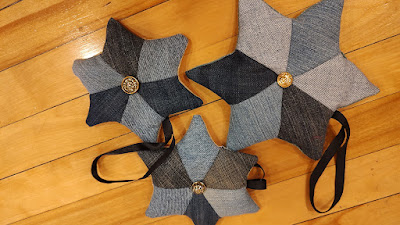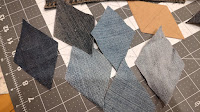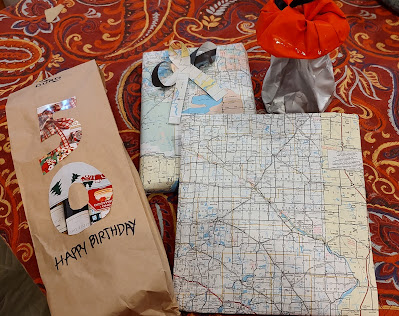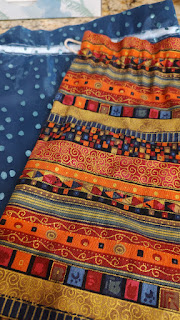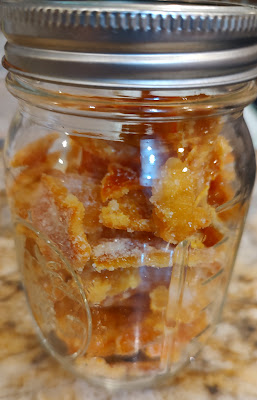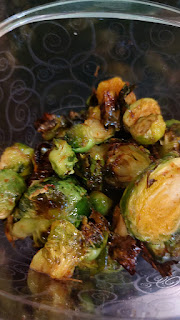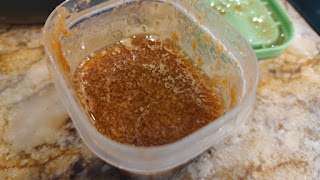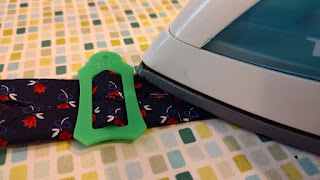Thursday, December 21, 2023
Low waste resolutions
Sunday, December 17, 2023
Denim ornament upcycle
It's the holiday season. While my Jewish-Muslim family does not do a lot for Christmas, many of our friends celebrate. I had a few events to attend, a few gifts to give and a desire to be sustainable. My stash of scraps and materials to upcycle is also getting too big for the space that I have in my house. Given all that, I decided to start crafting.
While I seldom wear jeans because I can't find jeans that fit well (but someday maybe I will make a pair), I have found that I like to work with denim especially piecing together different colors. I found the directions to make quilted denim stars from Pillar Box Blue and thought I would make a few as Christmas gifts for a few of my friends who celebrate.
The directions from Pillar Blox Blue were fantastic, so I won't repeat the step-by-step, but I will share my tweaks.
I made the first star using a 7cm template as described in the blog, but that turned out a little large for a Christmas ornament so I created a 6 cm template for the additional ornaments I made. The seams on the first one were a little messier than I wanted so I switched my sewing foot to a quilting foot and that helped me sew more precise about 1/4 inch seams. I also chain-stitched the diamonds for multiple starts didn't have to waste time or thread.
I basted the ribbon I wanted to use as the hanger on the edge of the right side of the denim star before I sewed the denim to the backing. That way the ribbon emerged nicely from the seam once I turned the star right side out. I also used small pieces of fabric to stuff the stars. The opening from which I stuffed it was pretty small so I used a funnel and a chopstick to help push the scraps in. While I did attach a button to the center, the ornaments looked good without additional quilting stitches so I skipped that as well.
I was pretty amazed at how well the stars turned out. And I was able to wrap the stars with upcycled materials before gifting.
Upcycled holidays
These two events involved gifting items to multiple people. So, as I often do, I decided to incorporate zero-waste principles. I did purchase a few new items such as a bottle of wine and books. But then I had fun getting creative with the garbage. Instead of purchasing gift wrap that would be used once and then tossed or recycled, I chose to reuse other items. I wrapped a few gifts with an old map and even created bows with strips cut from it.
The bottle of wine came in a bag so I cut a '5' and a '0' from a catalog that came in the mail and pasted them on to create a birthday theme. I also turned a coffee bag inside out to create a gift back for another item. I wasn't so thrilled with how simply turning it inside out looked so I cut the bag into a rectangle and transformed it into wrapping paper. I cut a few narrow strips from the bag and ran scissors against it to create curly ribbon.
I also made some upcycled gifts for these events, and you can read more about that in my companion blog post.
When we exchange gifts within the immediate family, we now use cloth bags that we then save for the next time. We have been using them for the past few years.
Sunday, December 10, 2023
Upcycling the food scraps
Food waste in the United States is a problem. The Department of Agriculture estimates that 30 to 40 percent of the food supply eventually becomes waste. Sometimes food is left unharvested in a farm field. Other times it spoils in a store or is thrown away by the consumer.
Tuesday, November 21, 2023
The easiest upcycle
Sunday, October 29, 2023
A trio of towel mends
Saturday, October 21, 2023
A long term project
Sunday, March 19, 2023
Adapting patterns for upcycled materials - purse edition
I am not generally a purse person. I use them to carry my stuff, but I don't have many. I use a relatively small crossbody purse daily, and the zipper on that bag broke. The bag was a little smaller than I needed and the fabric had pilled. Instead of taking apart the purse to replace the zipper, I decided it was time for a new purse.
Through an online search, I identified a cross-body purse pattern that filled my needs - the Teya Crossbody from Apple Green Cottages. I downloaded the pattern and printed it on recycled paper. Then I began searching through my stash of materials.
I had wanted to use the upholstery scrap with the blue flower (pictured above) forever and decided to coordinate that with a plain blue scrap I had a bunch of zippers from the jumble stash. I also had a strap and hardware from a purse that was still functional, but really dirty despite washing. I also had some lightweight interfacing, quilting cotton, corduroy, and a jacket that my son had outgrown, but was not in good enough shape to be given away.
Upcycling means working with what I have, not necessarily what the pattern envisioned and I had several redos and adaptations along the way.
I had hoped to use the jacket for the pocket linings at the front and back of the purse, thinking it would add water repellency, but when I pinned the pattern pieces to the fabric and cut one of the pocket linings, I realized that I did not have enough and it wasn't sturdy enough for what I needed. I switched to the quilting cotton I was using on the pattern.
The upholstery scraps also caused me consternation. One of the first steps of the pattern was to make a tab for a recessed zippered. The directions called for the fabric to be folded over twice. I tried that with the flowered upholstery and with the plain upholstery and both fabrics were simply too thick. I ended up cutting the tab to nearly the size I wanted and using an overcast stitch and some fray check to finish the edges.
The seam allowance on the bag was 3/8 inch and in some places, I simply went to 1/2 inch to accommodate the thickness of the layers. The bottom of the bag is not as neat and crisp as I would have liked, but I hope no one is looking at that too carefully. The pattern called for the strap ends to be sewn onto the side seam on the outside. The fabric was too thick to sew there so I moved it to the inside on the top edge.
I made a few changes that went off without a hitch I did not have any fusible fleece so I sewed the corduroy to the bag lining. None of the zippers were exactly the right size. With pliers and an Xcato knife, I was able to cut down the top metal zipper. The other two zippers were an inch smaller than called for. One required no modification and the other required me to lengthen by 1/2 inch the fabric tabs on either side of it. I was able to add clips to the inside and outside of the purse.
I haven't yet tackled water repellency and I am not yet sure if I will do that, but I did test rubbing some beeswax on some of the outer fabric after warming it with an iron and I may add that later (probably by melting it and brushing the wax on)
I am looking forward to transferring my stuff to this bag tomorrow and seeing how this works in real life.
.png)
